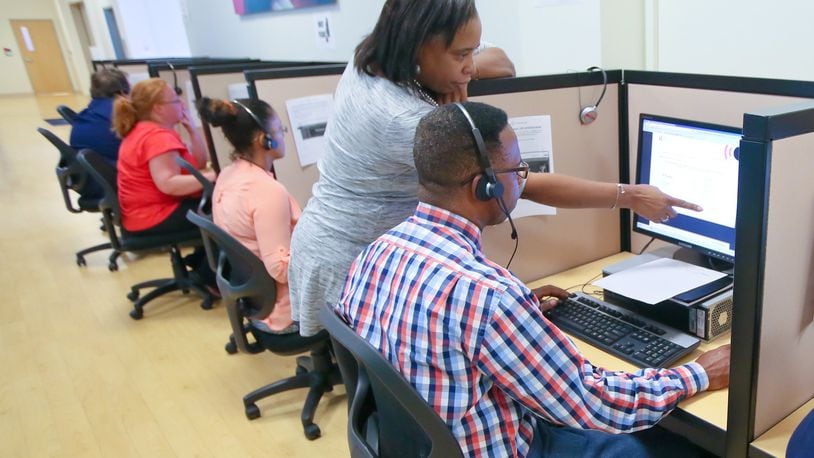Mario Baddour, vice president of operations for the Denver-based company, said the universe has quickly changed for such customer service companies.
“Machine learning changed the entire dynamics of our industry in the last couple of years,” Baddour said. “And by machine learning, I mean artificial intelligence, bots.
LOOK UP: Hamilton’s trendiest office real estate located on upper floors of older buildings
“You used to chat with someone in customer support, and you’d have an agent chatting back with you,” he said. “Now, there’s robotics chatting back, and they’re highly sophisticated. You would think you’re talking to a person.
“The industry has seen a major evolution in machine learning and robotics, etc.”
Telecommunications companies, cable companies and health care businesses “that needed hundreds of support agents, we’ve seen this going down by 30, 40, 50 percent,” Baddour said. “You don’t need all that anymore because of automation.”
The artificial intelligence and robotics “are handling less complex issues,” he said. “So now we’re left with highly complex issues” that must be handled by human agents.
RELATED: Butler County has the fastest job growth in Ohio. Here’s why
“Because of that, I don’t want to ramp it for the sake of ramping Hamilton, and fill the site,” Baddour said. “I need to look for talent, I need to be very meticulous and prudent on who I pick.”
Although the company doesn’t have as many employees as itinitially expected to have in Hamilton, Baddour said, “I’m very happy and pleased with what we have, and the pace that we’re going, from my perspective.”
But city officials still are pleased with StarTek, which they note occupied a long-vacant former Elder-Beerman department store in the downtown. That helped spark a renaissance of new employment in Hamilton’s urban center.
A number of other offices and stores have followed.
MORE: These 3 Hamilton companies have grown dramatically
RELATED: There’s a new energy in Hamilton — and it’s attracting more businesses
Cities, counties and states offer economic development incentives with the hopes that those incentives will cause companies to move in or expand, bringing with them tax revenues, such as payroll or property taxes, plus spending by employees in nearby stores and other businesses that will outweigh the amounts that the companies will save through the tax breaks.
Jody Gunderson, Hamilton’s economic development director, said StarTek had a change in management and other factors led to the change in employment levels.
“I would call it some very intellectual honesty more than anything, that the just realized they weren’t going to be able to make the numbers in the timeline that was part of the agreement,” Gunderson said. “So they just pulled out of the agreement.”
People have asked him whether StarTek’s failure to meet the original employment goals was bad for Hamilton.
“I just said, ‘They’re a great company today, but even when they came along, they were one of the first businesses that started coming back into the downtown core and was really part of our revitalization efforts,’” Gunderson said.
“I fully anticipate them to continue to be a big part of our revitalization in our downtown,” he said. “They’re a great company, good people that work for the company. It didn’t make the initial bang that even they thought it was going to, but they’re still a very important part of our downtown.”
The Journal-News in early 2017 reported StarTek Hamilton was negotiating with a major cellphone carrier for a deal that would add 100 customer service representatives. In late 2017, the company had 282 employees and hoped to have almost 500 by the end of 2018.
About the Author
